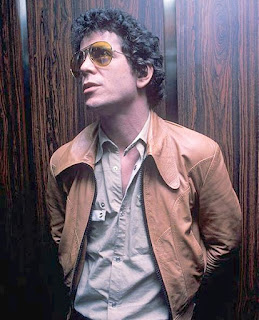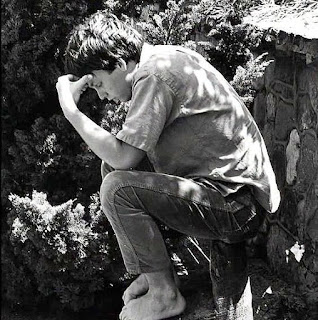"Every movie star is disliked by some people," said John Cromwell, another director with whom she worked, "but everyone liked Jean Arthur." She worked assiduously at placing herself beyond Hollywood's usual grasp. She recoiled from interviews, shunned photographers and declined to participate in the standard publicity gimmicks. She avoided parties and nightclubs and the glamour set that inhabited the likes of Club Mocambo and the Troc. Instead, she chose to live as a virtual recluse. As her one-time husband, movie producer Frank Ross, once affirmed, "She really wants to be left alone."
Peter Pan provided Arthur with a fictional affirmation of her values, "If you can hang on to your individuality, hold tight to your freedom, and not get squigged-out as you grow older, then and only then are you mature," she said during the play's run, later adding that "people who aren't free like Peter, or at least hunger to be free, aren't aware of the adventure of living. They're walking around dead." "She was a nonconformist too," said Jean of Joan of Arc, "a believer in her own intuition. Intuition, that's what Joan's voices were. She just wanted everybody to go home and mind their own business," which is all that Arthur wanted, as well.
Jean Arthur's aversion to publicity would eventually cause the mainstream Hollywood press to turn on her, but for the time being journalists were more intrigued than anything else. Many saw her as a sort of American Garbo, only even harder to reach. "It is Miss Arthur, even more than the divine Garbo, who wants to be alone," declared Movie Classic in January 1937.
James Stewart was impressed with his leading lady, later calling her "the finest actress I ever worked with. No one had her humor, her timing." You Can't Take It With You was far from either's best opportunity to display their respective abilities, but it helped establish them as the quintessential Capra couple. Arthur and Frank Ross had recently moved from Beverly Hills into a unique, modernistic three-story house high in the hills of Brentwood, complete with pool, terrace and garden. Still, Arthur remained curiously frustrated from a professional standpoint. Her husband further explained that "Jean is not essentially a happy person, you know. She is not in any way a Polyanna. She is never satisfied with herself."
Few Hollywood films have stamped themselves as deeply upon the American consciousness as Mr. Smith Goes to Washington (1939). The real message of this film is that the forces of evil in America's political institutions are as powerful and entrenched as the forces of good, and that only through the latter's eternal vigilance can occasional, marginal progress be made. The film's own conflicting impulses were a product of the melding of the fundamentally conservative philosophy of its director, Frank Capra, and the left-wing leanings of screenwriter Sidney Buchman, a Communist Party member who brilliantly adapted Lewis Foster's original story. In the Capra/Buchman treatment, good is represented in the figure of Stewart's Jefferson Smith, a "Boy Ranger" leader who is unaware that his appointment to fill out the term of a deceased senator is the work of a political machine that expects him to serve as a rubber stamp for its graft. Smith's opposite number, with a heart as evil as Smith's is pure, is machine boss Jim Taylor, played by portly Edward Arnold, who practically came to define the role of the snarling, capitalist pig.
Between the polar opposites of Stewart and Arnold in Mr. Smith were two other principal characters whose attitudes toward the democratic system were decidedly more ambivalent. Senator Joseph Paine, Smith's idol, was once an idealist whose presidential ambitions led him to sell out his principles to the powerful Taylor machine. Veteran character actor Claude Rains, with whom Arthur had once appeared on Broadway in The Man Who Reclaimed His Head, was cast in this role as the distinguished-looking orator whose eloquence masks a guilty conscience and weak stomach for the fraud he must perpetrate in order to continue Taylor's patronage.
Though she constantly talks of quitting and going back home to Baltimore, Arthur's Saunders stays on because she needs the job "and a new suit of clothes." Paine has given her the assignment of watching over his junior colleague and keeping him away from anything that smacks of real politics. Arthur's screen time in Mr. Smith is modest in comparison with that of her leading man, but again her role is the pivotal one in the film. She is both the agent of the unsuspecting hero's ultimate triumph and the buffer Capra has set up between the almost unbearably naive protagonist and the presumably more skeptical audience. For if the world-weary Saunders can be converted to Smith's cause, then we will be convinced as well. In the beginning, we see Smith as Saunders does, as a hayseed whose wide eyes have failed to notice that he is nothing but an "honorary stooge," as the press has scornfully labeled him.
Mr. Smith Goes to Washington is best remembered for Stewart's famous filibuster at the end of the film. But the most moving scene in the movie is the immediately preceding one, where Saunders talks Smith out of quitting the Senate and urges him into battle. Smith sits sobbing at the Lincoln Memorial, where he has gone, baggage in hand, for one last look before leaving town that night. "You can't quit now, not you," she admonishes him. "You didn't just have faith in Paine or any other living man. You had faith in something bigger than that. You had plain decent everyday common rightness. And this country could use some of that-yeah, so could the whole cockeyed world-a lot of it." On October 17, 1939, Jean Arthur's thirty-ninth birthday Mr. Smith Goes to Washington had a celebrity preview at Washington's Constitution Hall, home of the conservative Daughters of the American Revolution. In attendance were 4,000 special guests, including members of Congress, the national press corps and several Supreme Court justices. Embarrassed and humiliated by the unflattering portrayal they had received, official Washington lashed back, calling the film an indictment, rather than a celebration, of American democracy. Fortunately the critics and public strongly supported Mr. Smith, and it was nominated for eleven Academy Awards. And in 1942, defiant Parisians proved the opposite of Joe Kennedy's theorem: they chose Mr. Smith as the last English-language film to show before the Nazi ban on American and British films took effect.
Hollywood passed from the golden era of the thirties to a new decade, and Jean Arthur became more insecure with each new success. To the extent Arthur had political thoughts, they tilted heavily leftward (George Bernard Shaw and Erich Fromm, her two greatest intellectual heroes, were both committed socialists). Louella Parsons thought Arthur's aversion to conformity was the real explanation for her idiosyncrasies. "I never believed that Jean Arthur suffered from any kind of a complex," Parsons said. As Arthur explained in one of the last interviews she ever gave, "You have one life, you do what you want to do. Some people like to do what everybody else does-go to parties and talk about nothing. The only real reason for living is doing what you want to do, or trying to, anyway." For the remaining years of her life, Arthur would keep on doing just what she wanted-or trying to. She didn't let many people see what she was really like. Helen Harvey, Arthur's one-time agent, added: "She wasn't very real. Her deepest passion in life was reserved for her ideals, rather than for people." —"Jean Arthur: The Actress Nobody Knew" (2004) by John Oller


































































